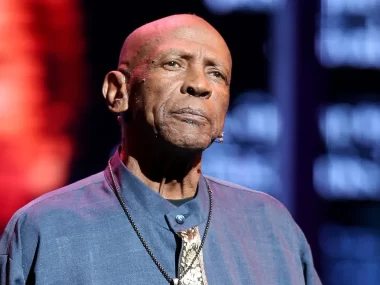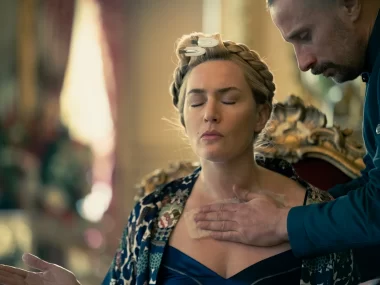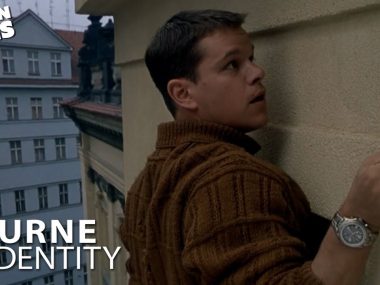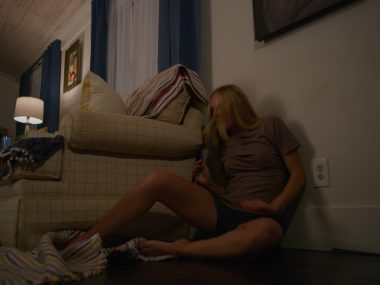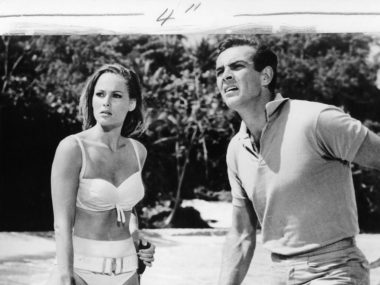|
Neubauer Coporation
Getting your Trinity Audio player ready...
|
Any English history buff will be familiar with the 1st Duke of Buckingham, also known as George Villiers. A notorious character whose ascendance from middling nobility to trusted favorite of one King James I—plotted by his mother, Mary—can only be described as meteoric. Leicester-born Villiers had the ear of the King in the 1600s, having managed, despite less than favorable circumstances (his widowed mother Mary inherited many debts upon his father’s death) to socially climb the aristocratic ladder all the way to becoming one of the most powerful men in the country. Before he was assassinated, that is.
Julianne Moore and Nicholas Galitzine are now starring as the notorious mother-son duo in a limited series on Sky, aptly named Mary & George, which recounts this often salacious period in history. Their performances are enigmatic, cunning… perhaps even approaching Emmy territory—but how close is the show to reality? Here are five things to know about the real George Villiers.
He Was The King’s Confidant… And More Besides
It was an open secret that King James I had many “male companions”, whom he would often be spied kissing in court. In 1616, George Villiers replaced the King’s previous companion, Robert Carr, after catching James’s attention with his “good looks” and dancing abilities. Villiers quickly rose through the ranks—aided by their romance and his occasional self-aggrandizement—and ultimately became the King’s favorite. The King loved Villiers so much that he created new titles for him. In 1623, Villiers was created the Duke of Buckingham, the first of his kind.
There has been much speculation about the sexuality of other royals through history—such as Queen Anne, so memorably portrayed by Olivia Colman in The Favourite, or King Edward II—but none with quite so much evidence to support the claims as in the case of James I.

Villiers Was “The Handsomest-Bodied Man In All of England”
Owing to the dance classes Mary Villiers put him in as a child, George was a skilled mover. He wasn’t an intellectual by any means, but he had charm and physical attributes sufficient to woo a royal. Godfrey Goodman, then the Bishop of Gloucester, described Villiers as “the handsomest-bodied man in all of England; his limbs so well compacted, and his conversation so pleasing, and of so sweet a disposition.” King James also considered George to be “as beautiful as a hunting leopard.”
George Was A Virgo
Which figures. Born on 28 August 1592, the Duke asserted his Virgo characteristics, particularly in how he put his careful planning and organizational skills to use navigating the court. From his Astrotheme chart: “You are inclined to seek stability and you tend to protect yourself with your actions. Possession, acquisition but also communication, without opening up too much, are part of your deep motivations. You are rather autonomous and constant, however, it is important that you pay more attention to others, so that you can improve your outcomes.” Sounds familiar…

Even after King James’s death, he retained influence
James died in 1625, and while it has been widely suggested that George poisoned him, there’s little evidence to suggest that is actually true. But when Charles I ascended the throne upon the King’s death, he kept the Duke as his right-hand man, with the pair often gossiping about their enemies and plotting (terrible) foreign policy plans.
George was so hated by the public, his funeral had to take place at night
On 23 August 1628, the Duke of Buckingham was stabbed with a dagger by an alleged acquaintance, John Felton. Felton was a disgruntled member of the military who believed he was acting in the interests of Parliament. London rejoiced at the news, and Villiers’s death was celebrated in poems and pamphlets.
According to historian and author Miranda Carter, despite his extravagant black marble tombstone in Westminster Abbey (which broke several statues and wall ornaments in the chapel vault because it was so big), at the time of his death, George was such a villain in the eyes of the public that his funeral had to take place at night, for fear of protests and riots.
Original article posted at Vogue

























